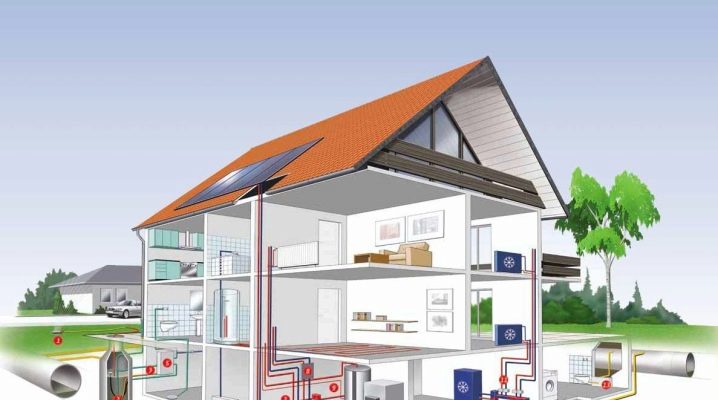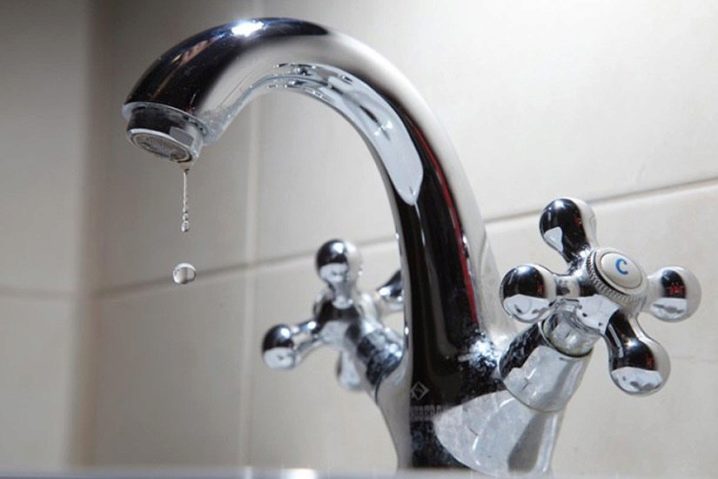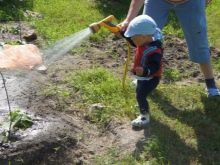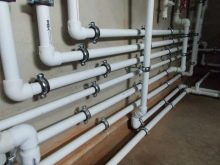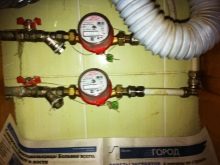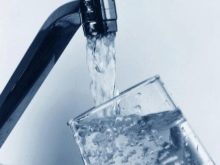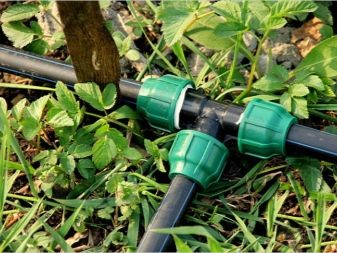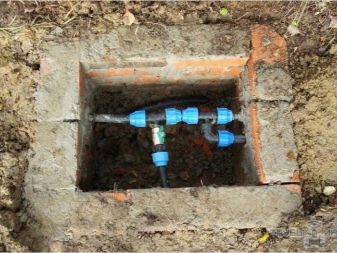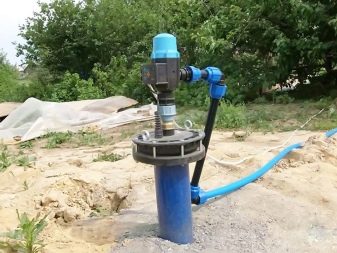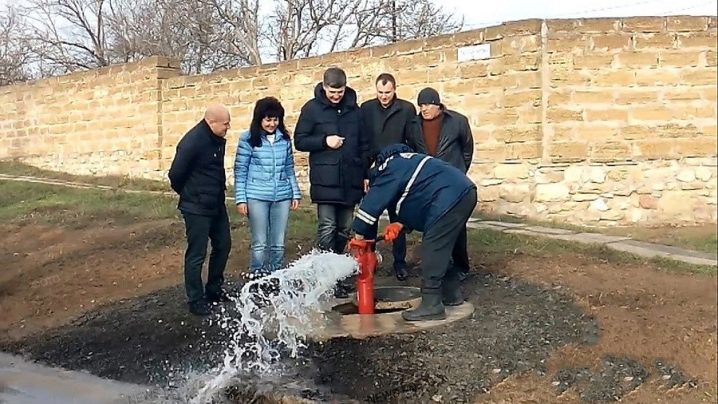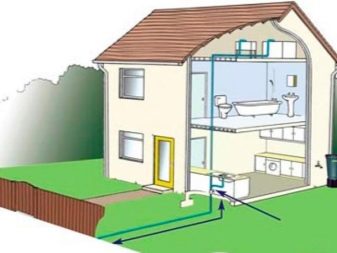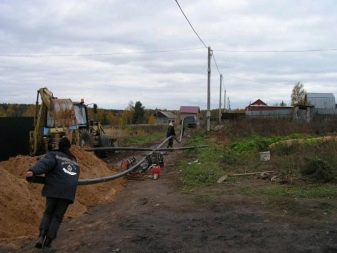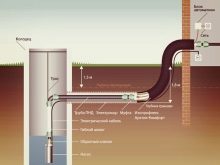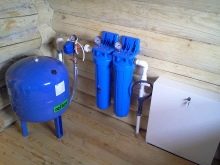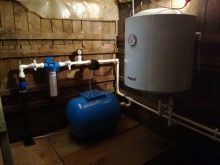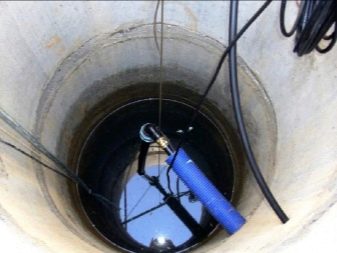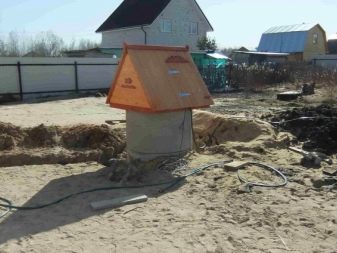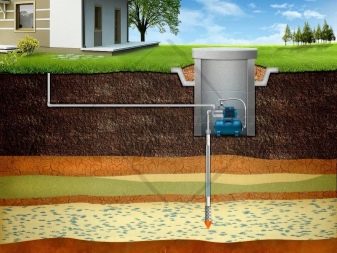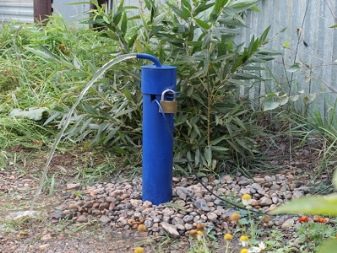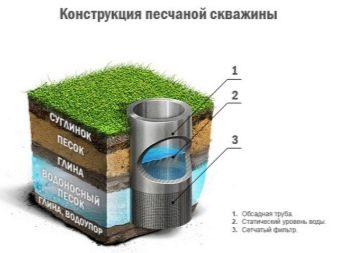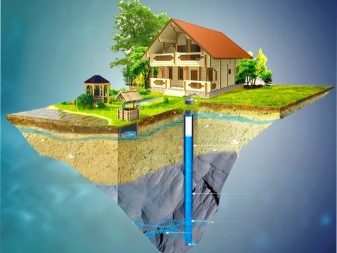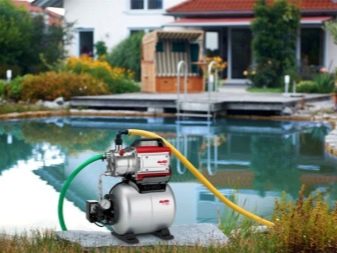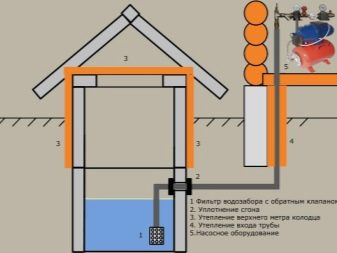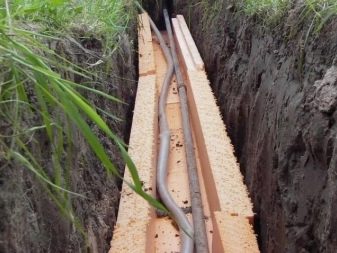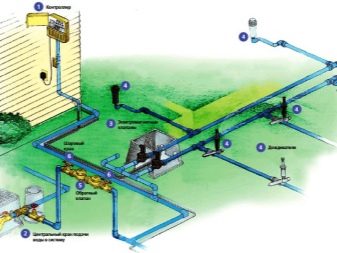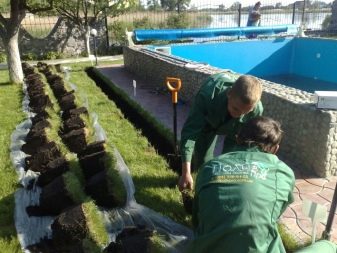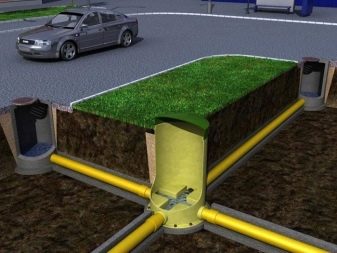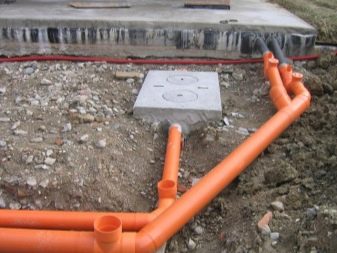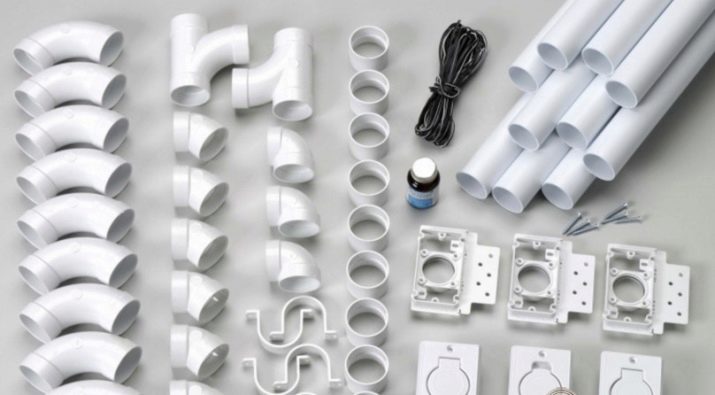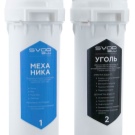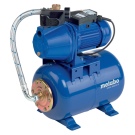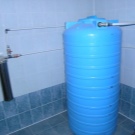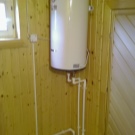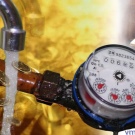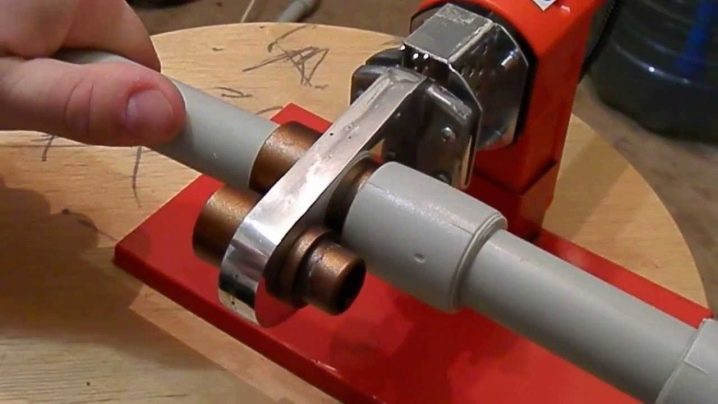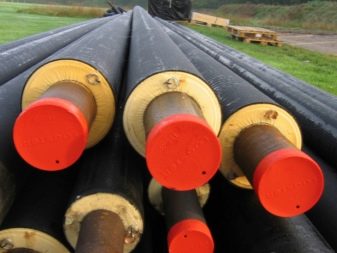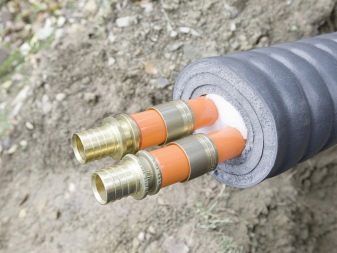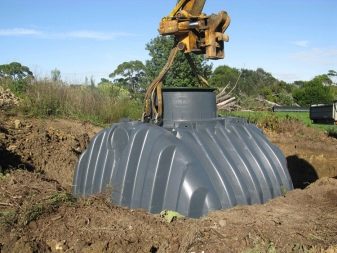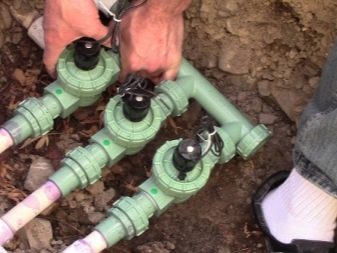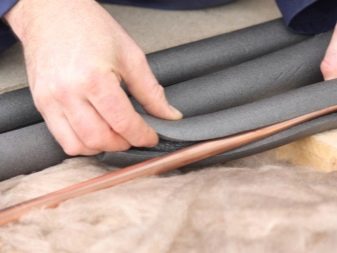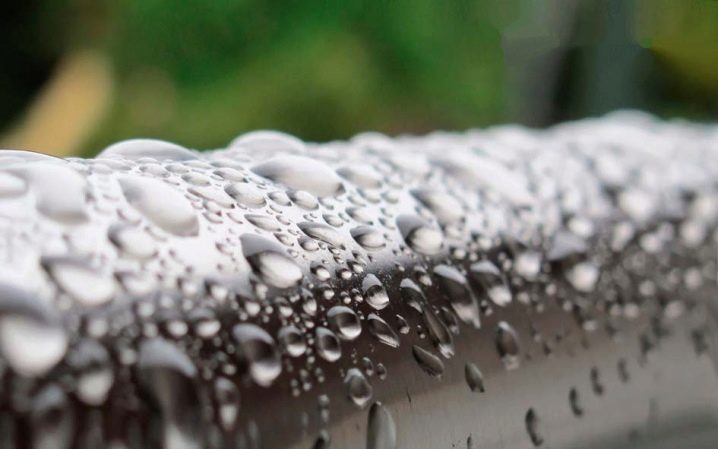Stages and details of running water in a private house
In the modern world it is very difficult to imagine housing without plumbing. It is very easy to assemble the system by yourself if you have all the necessary materials and an understanding of a clear plan for all the work.
Segment importance
The constant availability of water in a private house or at the cottage is a very important component for the comfortable living of all residents. Water is necessary for many things. This is not only cooking and bathing procedures, but also watering the garden, washing and cleaning, all sorts of technical work in the house and on the site.
The main advantages of plumbing in a private house is a constant flow of water at any time of the year.
Convenience is that all communications are reliably protected from mechanical and other influences. because of its location underground, but at the same time they have easy access for repair or partial replacement.
In this article we will explain in detail how to equip the water supply system on the site as simply and efficiently as possible.
Design features
The main difference between a private house and an apartment is the absence of centralized water supply and sewage systems. Therefore, all the troubles of wiring, as well as maintenance of water supply falls on the shoulders of the owner of a house or land. Before you start wiring, you will need to take care of drawing up a construction plan. The water supply scheme in a private house will depend on what the source of the water supply will be, whether it will be a winter or summer version of the pipeline and how many consumers there will be.
The sewage system usually includes:
- source of water intake;
- the pipes themselves, through which water will be transported;
- accessories: pump, filter, counters, other devices;
- points of water intake.
System varieties
First of all, water supply systems can be divided into two types depending on the season of use. There is a summer and winter type.
If it is assumed that water will be needed for simple domestic needs in the summer cottage, then the summer type of water supply system will do. Distribution of a full-fledged system in this case will be an unnecessary waste of funds. An alternative would be a stationary or collapsible plumbing, designed to use cold water and located on the street.
The main advantage of a collapsible type of water supply is that at the end of the summer season the water supply hoses can be removed for storage during the winter period.
To carry out the layout of the summer collapsible water supply system, no additional tools will be needed, since all its parts are above the ground.
The peculiarity of the stationary type of water supply is that the pipes for water supply are not deep under the ground (up to 70 cm), and only collection points are located on the surface. An important condition for the full functioning of such a system is a complete descent of water for the winter period, in order to exclude the thawing of pipes.
More reliable is the winter version of the water supply of a private house. The design and complexity of such water supply will depend on the source of water intake.It can be a central water utility, an ordinary well, a natural source or a well. Let's take a closer look at each option.
One of the possible ways to install water supply is to connect to a centralized water supply. This option is suitable if the central water supply network passes near the cottage or house. This will greatly simplify and cheapen the organization of water supply in a private house. In this case, a constant water pressure and its relative quality will be ensured. All you need is to connect to the centralized water supply system in a specially designated place.
However, connecting on your own will not work out - before all the work is carried out, it will be necessary to draw up a package of documents, permits and estimates, after which the workers of the water utility will insert the additional pipe leading to your section.
Permission to connect to the centralized water supply system can be obtained from the local water utility.
Here is an example step-by-step guide to action:
- First you need to get a plan of the site, which will be marked all running through the communication system.
- The site plan, the application for connection, as well as documents confirming the right of ownership, are submitted to the local water channel management.
- Employees of the institution are issued technical conditions (TU) for connection with the indication of the place of pipe insertion and a list of all necessary materials.
- On the basis of the issued TU, a project is drawn up for distributing the water supply system in a private house.
- Then the documents must be registered with the local SES, as well as take permission from the utility organization to perform construction and repair work. Connecting a private house to the water supply is performed by structures that have official permission to perform this type of work.
- Next, a certificate is drawn up with the employees of the water utility for the introduction of the water supply system into operation, the contract for the supply of water and the use of sewage networks, if any.
The main advantage of this type of connection is that you do not need to take care of the maintenance and servicing of all communication systems.
Among the shortcomings we can highlight the need to pay for water supply services, unsatisfactory water quality, pressure drops, collecting the necessary documents and obtaining all permits to perform work.
Using the well as a point for water intake is the easiest and most convenient option for arranging water supply. Even if there is no well at the site, you can dig it up without any problems. If in your area the depth of groundwater flow is small, this option of organizing the system of water supply to the site is the most acceptable.
The design of this type of water supply system may consist of a well, a pump (submersible or surface), an accumulation tank, a boiler for heating water, a wiring from pipes, a drain valve and points for water tapping. The construction of a detailed scheme will depend on the needs of homeowners.
For full-fledged work and durability of such a water supply system it is necessary that the state of the well meets the required standards:
- the seams were sealed;
- heat insulation and drainage works were carried out outside;
- filter installed against silting bottom.
To ensure constant availability and water pressure in the system, you can install a full-fledged pumping station with all the necessary devices for pressure control and emergency shutdown, as well as a water tank.Such a station is installed on the basement of the building or in the basement.
An equipped well is a complete autonomous water supply for a private house. However, to spend water in a house in such a way costs a lot. Drilling a well, purchasing equipment, and further maintaining the entire system will require considerable investments.
The type of well water will depend on what kind of groundwater will be used for water supply.
Top water, located shallow in the ground, suitable for watering the site and technical use. Such water is not suitable for drinking and cooking. To extract the water pipe, a needle well or an Abyssinian well is required.
For the extraction of groundwater wells are used to sand. Depending on the hydrogeological state of the ground mass, the produced water may be suitable for drinking, if the layer of waterproof rock prevents the ingress of waste water into it.
Artesian water is extracted by deep telescopic wells. Drilling is done with special equipment and costs a lot of money. But there will always be plenty of water in such a well, and its quality will be much higher,than in previous cases. Reducing the cost of drilling and maintenance is possible if the well will serve several sections. In this case, the costs are shared between neighbors.
Pumping out water from the well is a powerful pump. In addition, it will be necessary to install additional equipment to support the piping system and the electrical cable coming from the pump, as well as take care of the construction of the room for the pumping station. Because of the far location of the well from the house, the pipes leading to it will have to be laid at a certain depth and properly insulated. In that case, if the pipeline does not work underground, it is necessary to take care of its heating in the winter period.
If there is a lake, a river or another natural reservoir near the site, the creation of a water supply system is greatly simplified. However, care should be taken to install pumping equipment and protect it from vandalism and theft. Pipes for water supply from the source to the house should be laid according to all rules, otherwise there will be problems with pressure. They will also need to be insulated or laid at a depth below the freezing ground level.
Before drinking water from the source, it must undergo a series of studies in the SES. Based on the test results, a conclusion is made about its quality, is it suitable for drinking, or is it possible to use it only for technical purposes.
Creation and walkthrough
It will be easier to equip the water supply system in the country, if you stick to a certain plan, which comes down to the following points:
- Before starting work, it is necessary to obtain all permitting documents, as well as to analyze the ground and determine the depth of the groundwater flow;
- after the source for the water intake has been determined, it is necessary to start drawing up a plan for laying the pipes on the site and the scheme of the plumbing inside the room;
- it is necessary to mark the territory of the land plot taking into account the prepared plan;
- then you should mark the paths of the pipes inside the room;
- in conclusion, it is necessary to dig trenches, the depth of which will be indicated in the draft.
Calculations
Any construction begins with the drafting of the project. Do all the necessary calculations at the design stage. A detailed plan will help determine the necessary amount of materials and devices: a pump, a filter, a pressure sensor, a meter, taps, and so on.
At the stage of drawing up the pipe layout, some nuances should be taken into account:
- water pipes must not cross or touch a gas pipeline or electrical wiring;
- the water intake point must be located at a remote distance from the drain of the sewage or cesspool;
- you should not lay pipes under the foundation, install them in walls or floors;
- Water pipes must be laid taking into account the level of soil freezing and climatic features of your region.
Calculate the approximate amount of water consumption during the day. Based on these calculations, the capacity of the equipment for servicing the water supply system is selected.
You can entrust the drafting of the project and all the calculations to specialists. The great advantage will be that all documentation will be compiled on the basis of current laws, all technical requirements are met, as well as an accurate calculation of materials and the cost of all work.
At the device of a private waterpipe width of trenches is not regulated. The depth of pipe laying should be below the depth of soil freezing. For regions with severe winters, it is recommended to lay the pipes to a level more than two meters from the surface.For the middle band, a depth of 1.5–2 meters will suffice. In the southern regions - up to one and a half meters.
When parallel laying multiple systems follow the rules of laying communications established by SNiP.
Regulation of the distance between the pipes:
- between water pipes - 1.5 m;
- between the water supply and sewage - 0.2 m from the outer walls;
- between the water and gas pipelines - 1m;
- between the power cables and the water pipe - 0.5 m;
- between the heating systems and water supply - 1.5 m.
Materials and tools
In order to conduct a water supply system at the dacha, you will need:
- pipes;
- connecting elements, cranes, couplings, adapters;
- filter;
- pump;
- pressure switch;
- accumulation tank;
- pressure measuring device;
- wiring;
- boiler;
- check valve type;
- counter;
- receiver.
If you connect the finished pump station to the water supply, additional devices will not be needed, since they are already included in the station.
The following tools are needed for the installation of a plumbing system:
- shovel;
- hammer;
- Boer;
- scrap;
- a set of screwdrivers and keys;
- Bulgarian or cutter;
- tool for welding pipes.
In addition, you will need materials for pipe insulation.
It may be:
- foam insulation;
- low pressure polyethylene (HDPE);
- mineral wool or glass wool;
- polystyrene shell;
- polyethylene foam;
- sprayed insulation;
- sand, crushed stone.
During the work may require additional materials and tools, consider this when drawing up estimates.
Styling process
The most important and crucial part of the arrangement of water supply in a private house is the process of laying pipes and installing equipment. Take this process with full responsibility, and then the probability of accidents and, as a result, additional costs for repair work, will be excluded.
The sequence of work:
- Installation of pumping equipment for wells or wells. Connect the pipe to the pump outlet using a fitting. Do not forget to install a coarse filter on the opposite end of the pipe. Install a check valve.
- Carry out the preparatory work in the yard - clear the area of debris, equipment and other items. Dig trenches under the pipes, taking into account the communications in the ground.Next, the installation of the external system of pipes and their installation.
- Install the necessary devices: boiler, storage tank, meter, pressure switch and pressure gauge, filter.
- Perform internal wiring in the house, connect all the points of water analysis.
- Start the system in order to check it for possible leaks. If any - eliminate.
- This is followed by carrying out insulation works.
Thermal insulation
Performance of heat-insulating works does not take a lot of time and does not demand special skills.
Before using a heat-insulating material, it is necessary to equip a trench - put sand or gravel on the bottom.
The procedure for insulation depends on what type of insulation you choose. One of the easiest ways of warming is glass wool or mineral wool. Water pipes are wrapped in glass wool and fastened with harnesses or special tape. Top lay waterproofing layer of roofing material.
Insulators of foam or basalt cotton wool are made according to the type of shell, so they simply overlap over the pipe and fixed with glue or adhesive tape. Next comes the laying of the protective layer.Corners and joints are equipped with shaped shells. It is important to choose the diameter of the shell so that it fits tightly around the pipe.
The most reliable protection against freezing of water in pipes is the heating of the pipe with an electric cable.
Such a pipe heating system can be equipped with sensors for temperature measurement and fully automated. Indicators for the system of automata can be set depending on the climatic conditions of the area, the depth of the pipe and the characteristics of the soil.
It is possible to warm pipes, using heat-shielding sprays or paints. Technically, insulation in this way is much better than the use of glass wool and foam. Its advantages are the lowest thermal conductivity, uniform coating without gaps, durability, safety. Such material is sprayed directly onto the pipe in an even layer and allowed to dry.
It is known that if water is under a certain pressure, it will not freeze. To maintain the desired level of pressure in the pipe crashes receiver. A prerequisite for forcing pressure is the presence of a check valve, as well as a closed valve.At the time of absence at the cottage in the winter, it is enough to set a pressure of 3-5 atmospheres. Relieve the pressure before starting the plumbing system.
Thermal insulation of pipes will allow to exclude the phenomenon of condensate accumulation on pipes with cold water in case installation of an air conditioner with humidity control in the house is not provided.
Recommendations for use
For proper operation and maintenance of the water supply system in a private house, it is necessary to make timely checks and preventive measures.
Among them:
- It is necessary to monitor the operation of the pump or pumping station. Clean up and replace consumables in time.
- Check the condition of the well, well, place of entry into the centralized water supply system.
- Use filters to purify water from large particles and various impurities to eliminate mechanical damage to equipment.
- Automate the system as much as possible. It is recommended to install temperature sensors, relays for automatic shutdown of the system.
- If the use of a water supply system is not foreseen in winter, it is necessary to drain the water from the pipeline system,and also from a water heater.
- Replacement of defective devices and parts of the water supply should be made in time.
For information on what mistakes should be avoided when laying the pipeline in a private house, see the following video.
